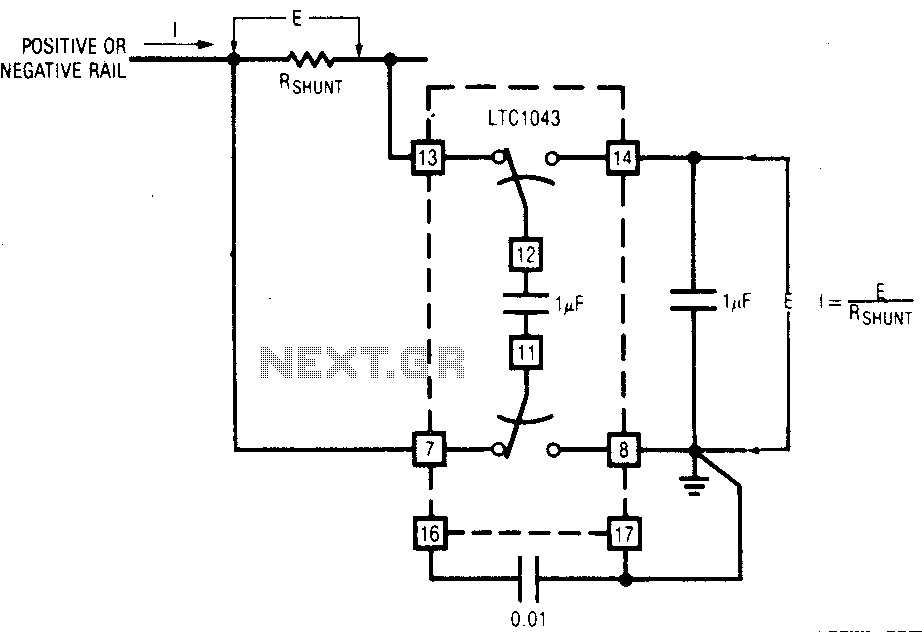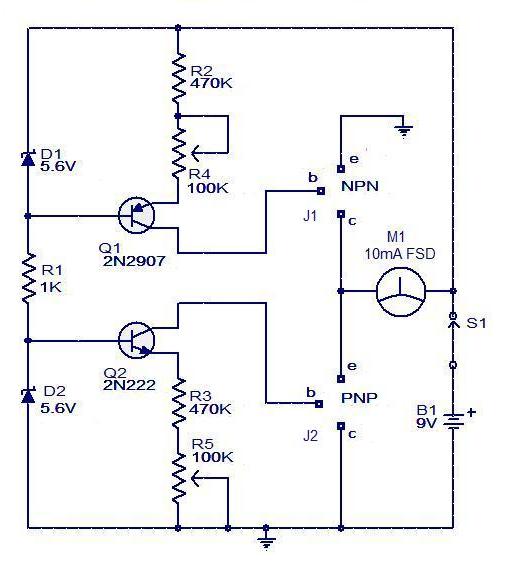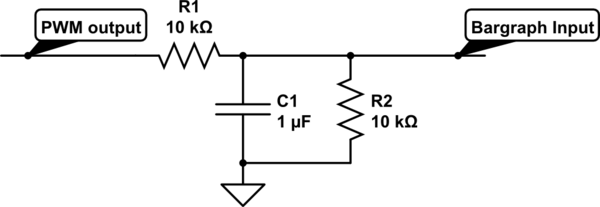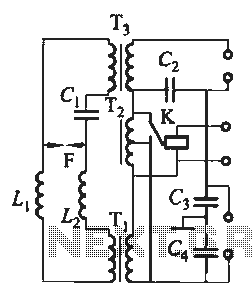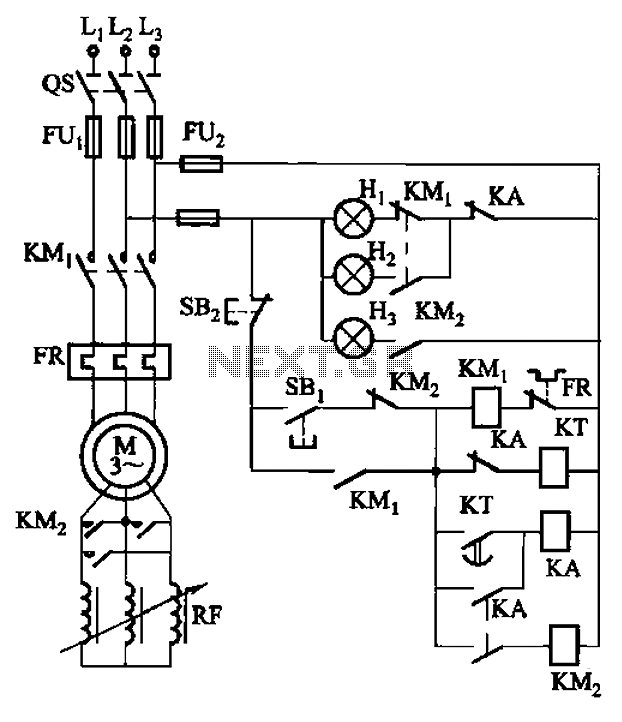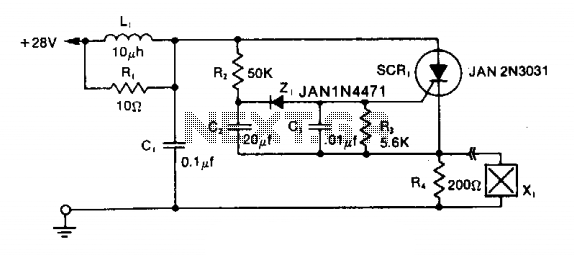
DA conversion circuit
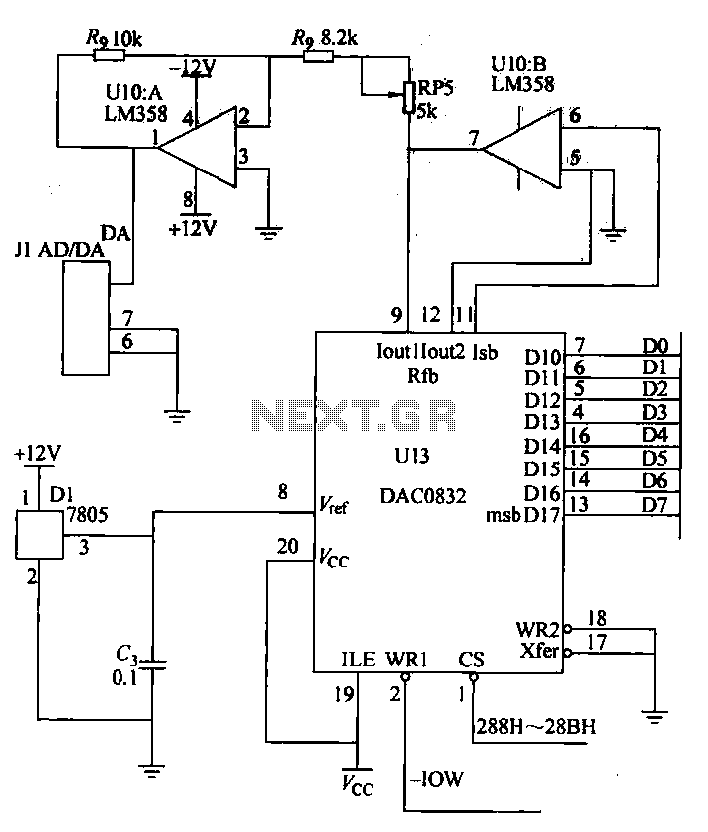
A digital-to-analog (D/A) conversion circuit utilizing the DAC0832 and the operational amplifier LM358, featuring two output channels with unipolar voltage output. The digital input range is from 00H to FFH, which corresponds to an output voltage range of 0V to 5V. This circuit is employed in a digital PID controller for temperature control of an electrical resistance furnace, where a digital input of 200 corresponds to an output of 5V. The DAC0832 operates within the address range of 288H to 28BH, and includes a reference voltage regulator block (7805) producing a +5V output. The initial output from the operational amplifier ranges from 0V to -5V, while the second stage of the operational amplifier produces an output from 0V to +5V.
The circuit described employs the DAC0832, a 8-bit digital-to-analog converter, which converts digital signals into corresponding analog voltages. It accepts digital input in binary form, ranging from 00H (0 in decimal) to FFH (255 in decimal). The output voltage is linear and unipolar, spanning from 0V to 5V, which is suitable for various applications, particularly in PID control systems for temperature regulation.
The operational amplifier LM358 is utilized in this circuit to amplify the output from the DAC0832. The first stage of the operational amplifier is configured to provide a bipolar output that ranges from 0V to -5V. This configuration allows for the adjustment of the output signal to meet specific application requirements. The second stage of the operational amplifier further processes the signal, providing a unipolar output that ranges from 0V to +5V, thereby ensuring compatibility with the control system.
The reference voltage for the DAC0832 is supplied by a 7805 voltage regulator, which stabilizes the voltage at +5V. This regulated voltage is crucial for maintaining accuracy in the D/A conversion process. The DAC0832 is addressed within a specific range (288H to 28BH), allowing for easy integration into larger systems where multiple devices may be controlled.
In the context of a digital PID controller, this circuit is employed to manage the temperature of an electrical resistance furnace. The digital PID controller processes input signals and adjusts the output to maintain the desired temperature. For instance, a digital input of 200 corresponds to an output voltage of 5V, indicating a specific setpoint for the furnace temperature.
Overall, this D/A conversion circuit is a critical component in applications requiring precise analog outputs from digital inputs, particularly in temperature control systems where accuracy and stability are paramount.D/A conversion circuit by the DAC0832 and op amplifier LM358, etc., there are two bad-out channel, unipolar voltage output. Digital output range: OO-H FFH, corresponding to an output voltage range; O Sv. Digital PID controller is plowing ox horn control bi cents. Electrical resistance furnace temperature control, which corresponds to 5v 200. ov corresponds to 0. DAC0832 address is 288H ~ 28BH, then the reference voltage regulator block 7805 output + 5v, before an operational amplifier output out of o ~ - 5v. The second stage of the operational amplifier output is o- + 5v.
The circuit described employs the DAC0832, a 8-bit digital-to-analog converter, which converts digital signals into corresponding analog voltages. It accepts digital input in binary form, ranging from 00H (0 in decimal) to FFH (255 in decimal). The output voltage is linear and unipolar, spanning from 0V to 5V, which is suitable for various applications, particularly in PID control systems for temperature regulation.
The operational amplifier LM358 is utilized in this circuit to amplify the output from the DAC0832. The first stage of the operational amplifier is configured to provide a bipolar output that ranges from 0V to -5V. This configuration allows for the adjustment of the output signal to meet specific application requirements. The second stage of the operational amplifier further processes the signal, providing a unipolar output that ranges from 0V to +5V, thereby ensuring compatibility with the control system.
The reference voltage for the DAC0832 is supplied by a 7805 voltage regulator, which stabilizes the voltage at +5V. This regulated voltage is crucial for maintaining accuracy in the D/A conversion process. The DAC0832 is addressed within a specific range (288H to 28BH), allowing for easy integration into larger systems where multiple devices may be controlled.
In the context of a digital PID controller, this circuit is employed to manage the temperature of an electrical resistance furnace. The digital PID controller processes input signals and adjusts the output to maintain the desired temperature. For instance, a digital input of 200 corresponds to an output voltage of 5V, indicating a specific setpoint for the furnace temperature.
Overall, this D/A conversion circuit is a critical component in applications requiring precise analog outputs from digital inputs, particularly in temperature control systems where accuracy and stability are paramount.D/A conversion circuit by the DAC0832 and op amplifier LM358, etc., there are two bad-out channel, unipolar voltage output. Digital output range: OO-H FFH, corresponding to an output voltage range; O Sv. Digital PID controller is plowing ox horn control bi cents. Electrical resistance furnace temperature control, which corresponds to 5v 200. ov corresponds to 0. DAC0832 address is 288H ~ 28BH, then the reference voltage regulator block 7805 output + 5v, before an operational amplifier output out of o ~ - 5v. The second stage of the operational amplifier output is o- + 5v.
Warning: include(partials/cookie-banner.php): Failed to open stream: Permission denied in /var/www/html/nextgr/view-circuit.php on line 713
Warning: include(): Failed opening 'partials/cookie-banner.php' for inclusion (include_path='.:/usr/share/php') in /var/www/html/nextgr/view-circuit.php on line 713
